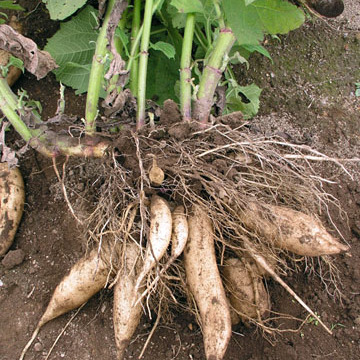A herb. There is an underground stem which lasts from year to year and this produces stems above ground each year. The roots are purple but orange inside. The tall stems above ground are covered with fine hairs. The stems are green in colour and covered with purple spots. The stems can be 1.5 m high. The leaves are opposite, thin and smooth with teeth along the edge. Other stems come from the axils of the lower stems. The yellow or orange flowers are on the ends of these stems. They are composite flowers. The tubers are cylinder shaped and joined together.

